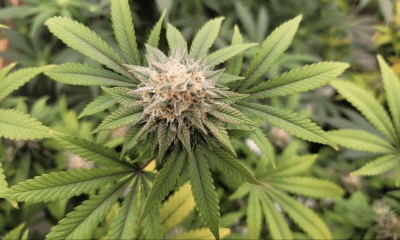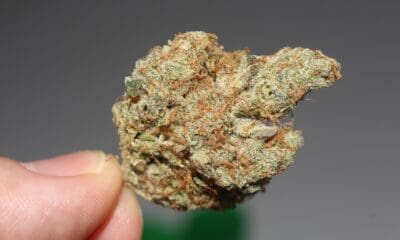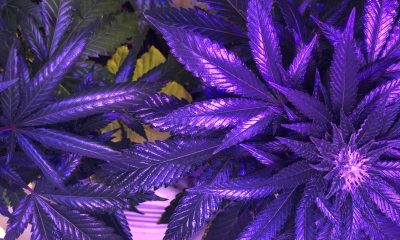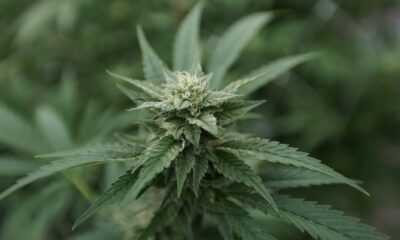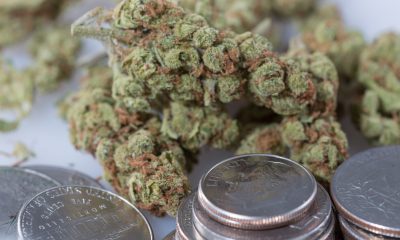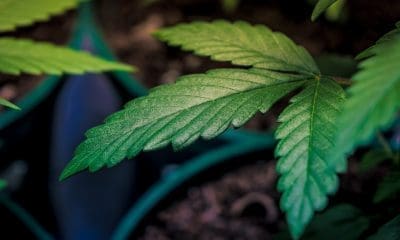Science & Health
Study Finds Natural Psychedelic Mushrooms Produce ‘Enhanced Effects’ Compared To Synthesized Psilocybin, Suggesting Entourage Effect
A new study suggests that the use of full-spectrum psychedelic mushroom extract has a more powerful effect than chemically synthesized psilocybin alone, which could have implications for psychedelic-assisted therapy. The findings imply that the experience of entheogenic mushrooms may involve a so-called “entourage effect” similar to what’s observed with cannabis and its many components.
“To date, clinical trials have generally been conducted with chemically synthesized psilocybin,” wrote the 15-person research team, representing institutions such as the Hadassah Medical Center at Hebrew University in Jerusalem, Boston-based Human Metabolome Technologies, Parow Entheobiosciences in Chicago and others, “and little attention has been given to additional, potentially therapeutic, psychoactive or non-psychoactive compounds found in psychedelic mushrooms.”
The findings, they said, indicate full-spectrum psychedelic mushroom extract (PME) “has a more potent and prolonged effect on synaptic plasticity” than chemically synthesized psilocybin (PSIL) on its own.
“These findings open up new possibilities for the therapeutic use of natural psychedelic compounds, providing hope for those who have found little relief in conventional psychiatric treatments,” Hebrew University said in a press release, adding that the study “suggests that psilocybin-containing mushroom extract may offer unique therapeutic effects not achievable with psilocybin alone.”
“This research not only underscores the superiority of extracts with diverse compounds,” the release says, “but also highlights the feasibility of incorporating them into Western medicine.”
To conduct the study, published late last month in the journal Molecular Psychology, researchers injected adult male mice with either synthesized psilocybin or a full-spectrum mushroom extract that contained not only psilocybin but also psilocin, norpsilocin, baeocystin, norbaeocystin and aerugeniscin. They then examined behavior in the mice, such as a head-twitch response (HTR), as well as samples of dissected brain tissue. Effects were measured at three days and 11 days after treatment.
“Our findings show no difference in acute effects on HTR,” authors wrote. “However, we found an effect of PME on synaptic protein levels in 4 brain areas that is significantly more pronounced overall than the effect of PSIL.”
Those synaptic proteins, they said, are seen as possible markers of neuroplasticity, which they describe as “the lifelong capacity of the brain to respond to experiences, learning and the environment and to reorganize structure, function and connections in response to such stimuli.”
That effect is believed to be central to the function of psychedelics in therapy.
Eleven days after treatment, the new study says, the effect of the full-spectrum mushroom extract “on metabolic parameters in the prefrontal cortex is clearly defined from that of PSIL suggesting a discernibly different or quantitatively stronger therapeutic mechanism.”
“The stronger effect of PME was highlighted by the results of the nested analysis of variance which takes into account the effect of the treatments on each of the synaptic proteins over all 4 brain areas,” it continues, “and showed that the extract increased all four synaptic proteins, while PSIL increased only two of them.”
Researchers noted that it’s possible other, unmeasured components of the psychedelic mushroom extract could be affecting the results. “These include various tryptamines and harmines present in psychedelic mushroom extract,” they wrote, adding that the topic “is of considerable interest and is the focus of ongoing studies in our laboratory.”
The study used extract from one specific mushroom species, Psilocybe cubensis. “We cannot exclude that other species of psychedelic mushrooms have different effects,” authors acknowledged, “as the concentration and ratio of tryptamines and other potentially psychoactive components changes by species, harvest and even part of the same mushroom.”
Those variances can be a challenge to medical researchers and drug developers, who typically aim for consistency and purity in pharmaceuticals. But the new research indicates that less-studied compounds in mushrooms could also hold significant therapeutic benefits, at least when taken together.
“While our data do not provide conclusive evidence for the therapeutic superiority of naturally-derived psychedelic mushroom extract over chemical psilocybin,” the team wrote, “they open the door to serious consideration of the potential of combinations of molecules found in psychedelic mushrooms.”
“Such combinations may not only have enhanced or more prolonged therapeutic effects,” they continued, “but may result in even more effective combinations by increasing the amount of the additional neuroactive compounds that are only present in extremely small amounts naturally.”
The report calls for further research “to confirm and extend these findings and to identify the molecules that may be responsible for the enhanced effects of PME as compared to psilocybin alone.”
In cannabis, meanwhile, a growing body of research indicates that cannabinoids besides THC and CBD—as well as dozens of other compounds found in whole-plant marijuana—contribute to an entourage effect that can affect the experience and potential medical benefits of the plant.
Earlier this year, a study looked at the “collaborative interactions” between cannabinoids, terpenes, flavonoids and other molecules in the plant, concluding that a better understanding of the relationships of various chemical components “is crucial for unraveling cannabis’s complete therapeutic potential.”
A study last year, meanwhile, found that cannabis products with a more diverse array of natural cannabinoids produced stronger psychoactive experiences in adults, which also lasted longer than the high generated by pure THC.
A separate 2018 study found that patients suffering from epilepsy experience better health outcomes—with fewer adverse side effects—when they use plant-based CBD extracts compared to “purified” CBD products.
Scientist last year also discovered “previously unidentified cannabis compounds” called flavorants that they believe are responsible for the unique aromas of different varieties of marijuana. Previously, many had thought terpenes alone were responsible for various smells produced by the plant.
Marijuana Can Help Increase Orgasm Frequency And Satisfaction For Women, Study Finds




